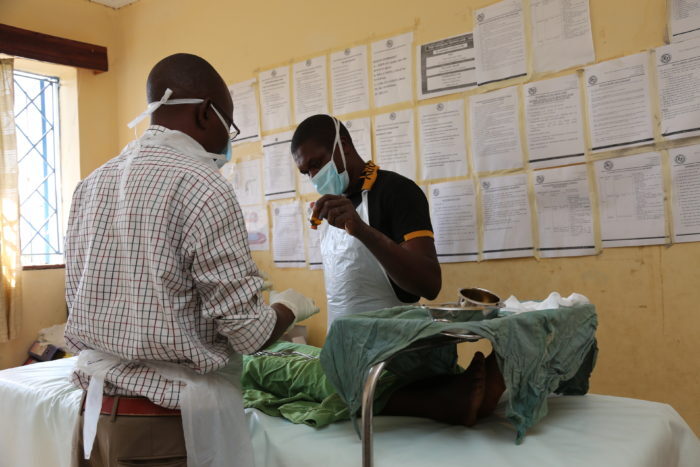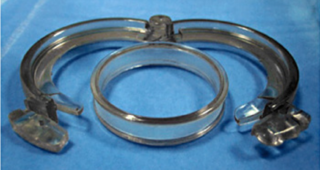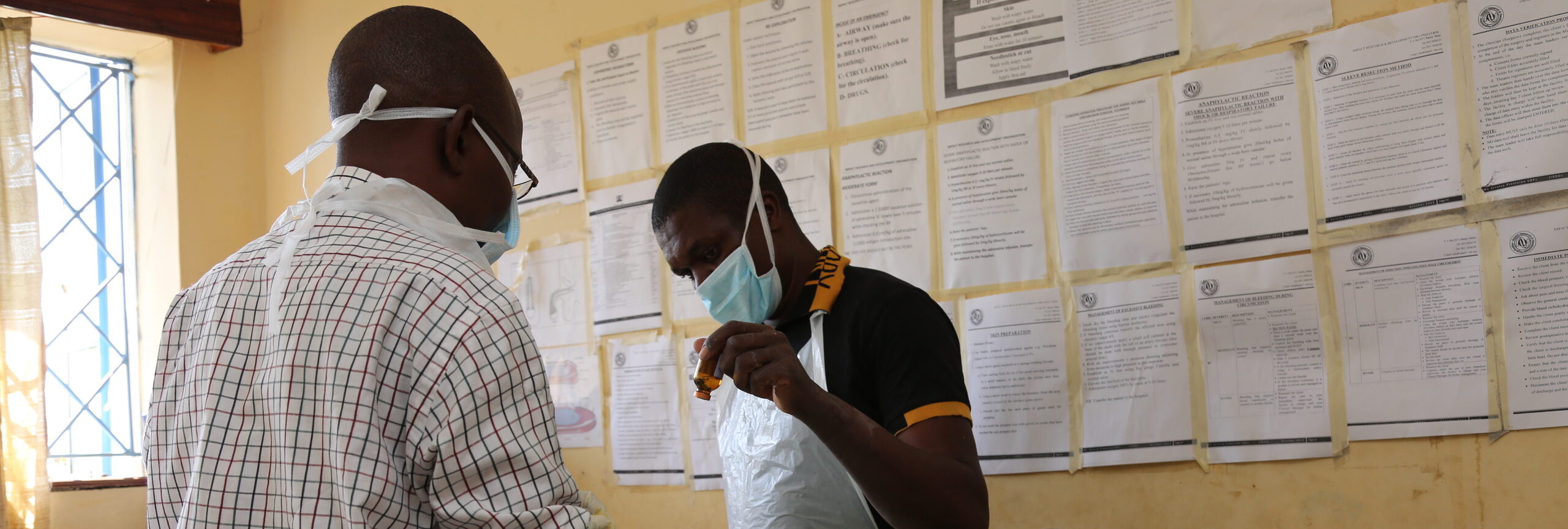At Makongeni Health Facility in Homabay County Western Kenya, a young boy rests calmly on a surgical bed, his hands intertwined behind his head. He is here for voluntary medical male circumcision (VMMC). VMMC is an HIV prevention intervention for men where the foreskin is surgically removed. Medicine is given to control pain during and after the surgical procedure.

The process involves pre-counseling where the client gets to learn more about HIV prevention, receives screening and treatment for sexually transmitted infections, HIV testing services, the actual procedure, and a post-circumcision review after seven days. The client is also advised on wound care and hygiene.
The surgery lasts for about 10-20 minutes with anesthesia and the patient experiences minimal pain. Clients heal in about two weeks.
Circumcision is one of the oldest rites of passage and marks the transition of a boy into a man but not for some communities in Western Kenya. VMMC campaigns were launched following concerns about the high HIV prevalence rate in the region. Nyanza region in Western Kenya makes up 10 percent of Kenya’s population but accounts for nearly half the country’s HIV burden, according to the HIV County Profiles 2016 report
Male circumcision reduces the risk of HIV transmission by 60 percent. World Health Organization
“We mobilize the boys in schools and we give talks and have a community mobilizer who goes door to door to discuss the benefits of circumcision,” said Mr. Evans Hamisi, a clinical officer and surgeon.
According to the World Health Organization male circumcision reduces the risk of HIV transmission by 60 percent. Additionally, it has other health benefits like reduced risk of contracting sexually transmitted infections, reduced risk of recurrent urinary tract infections, and prevention of penile cancer in men and cervical cancer in females. Reports show that cervical cancer among female partners of circumcised men is lower than in partners of uncircumcised men. This is because of reduced occurrence of human papillomavirus (HPV) infection among circumcised men.
Circumcision is not fully protective and must be used in combination with other measures.
“However, it is import to note that circumcision is not fully protective and must be used in combination with other measures such as remaining faithful to one uninfected partner, consistently using condoms, abstinence and knowing your HIV status,” said Jacob Yahuma, VMMC Project Lead.
Male Circumcision Innovations
In addition to VMMC, EGPAF is also adopting other prevention innovations for men including early infant male circumcision that targets male infants between 0-60 days.

“We are also supporting the ShangRing surveillance device method of circumcision, which is under research to see its suitability as a possible replacement of the conventional VMMC method due to its cost-effectiveness, fewer post-operation side effects, faster healing and return to work sooner,” said Yahuma.
The ShangRing is a small device that compared with conventional adult male circumcision has shorter operation time, less blood loss, less pain score, higher appearance/cosmetic satisfaction rate, and lower complication rate.
EGPAF has been implementing VMMC since October 2016 through a sub-grant to IMPACT Research and Development Organization (IRDO). In October 2018, EGPAF began direct implementation of VMMC using an integrated-hybrid service delivery model, where the Ministry of Health takes leadership. The project is funded by PEPFAR through CDC and is implemented in HomaBay, West Pokot and Turkana Counties. “This Financial year 2019, the project has a target of circumcising 49,052 males aged 10-49 years,” said Country Director, Dr. Eliud Mwangi.
Fourteen countries in Eastern and Southern Africa with high HIV prevalence have initiated programmes to expand male circumcision as an additional important strategy for HIV prevention.




